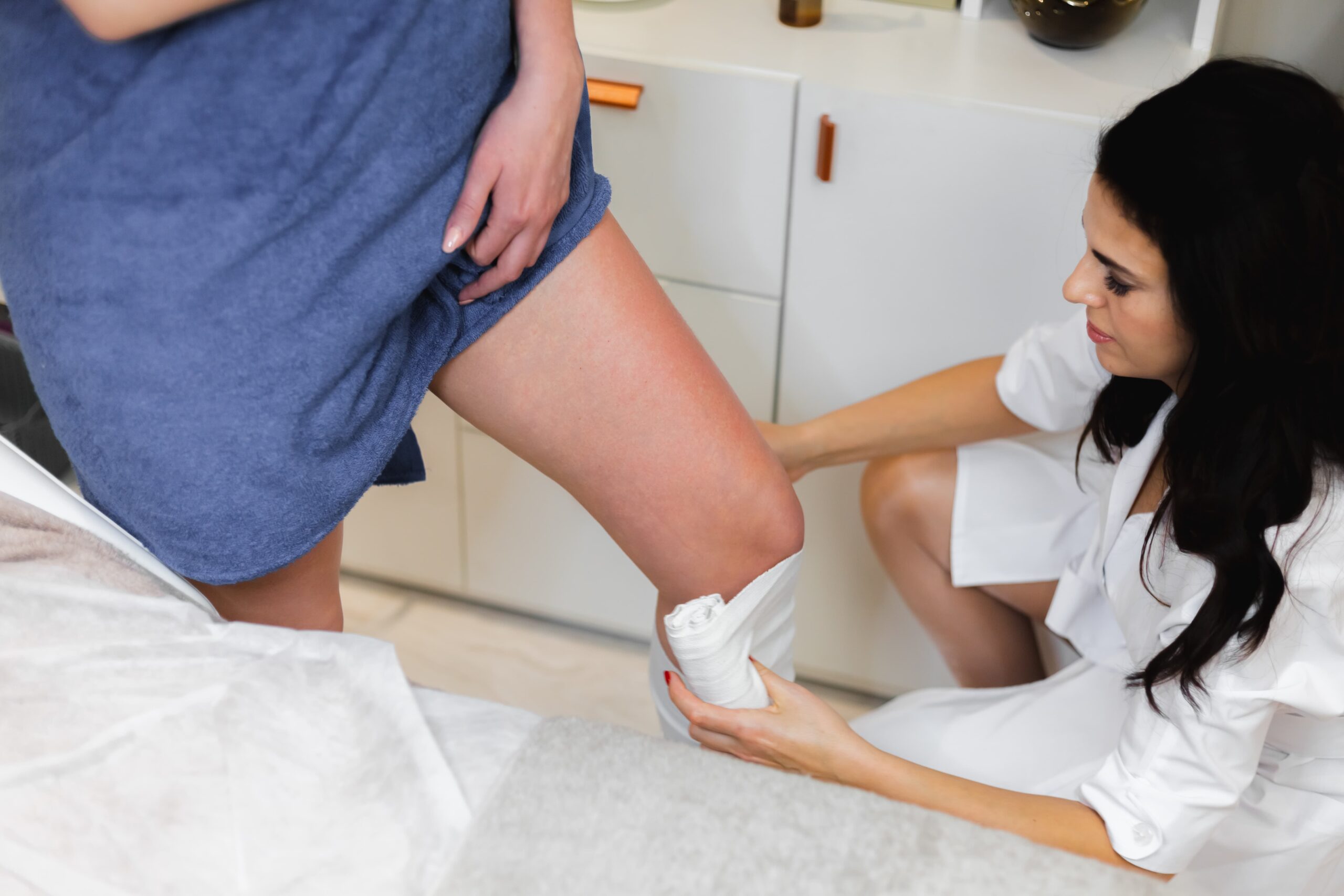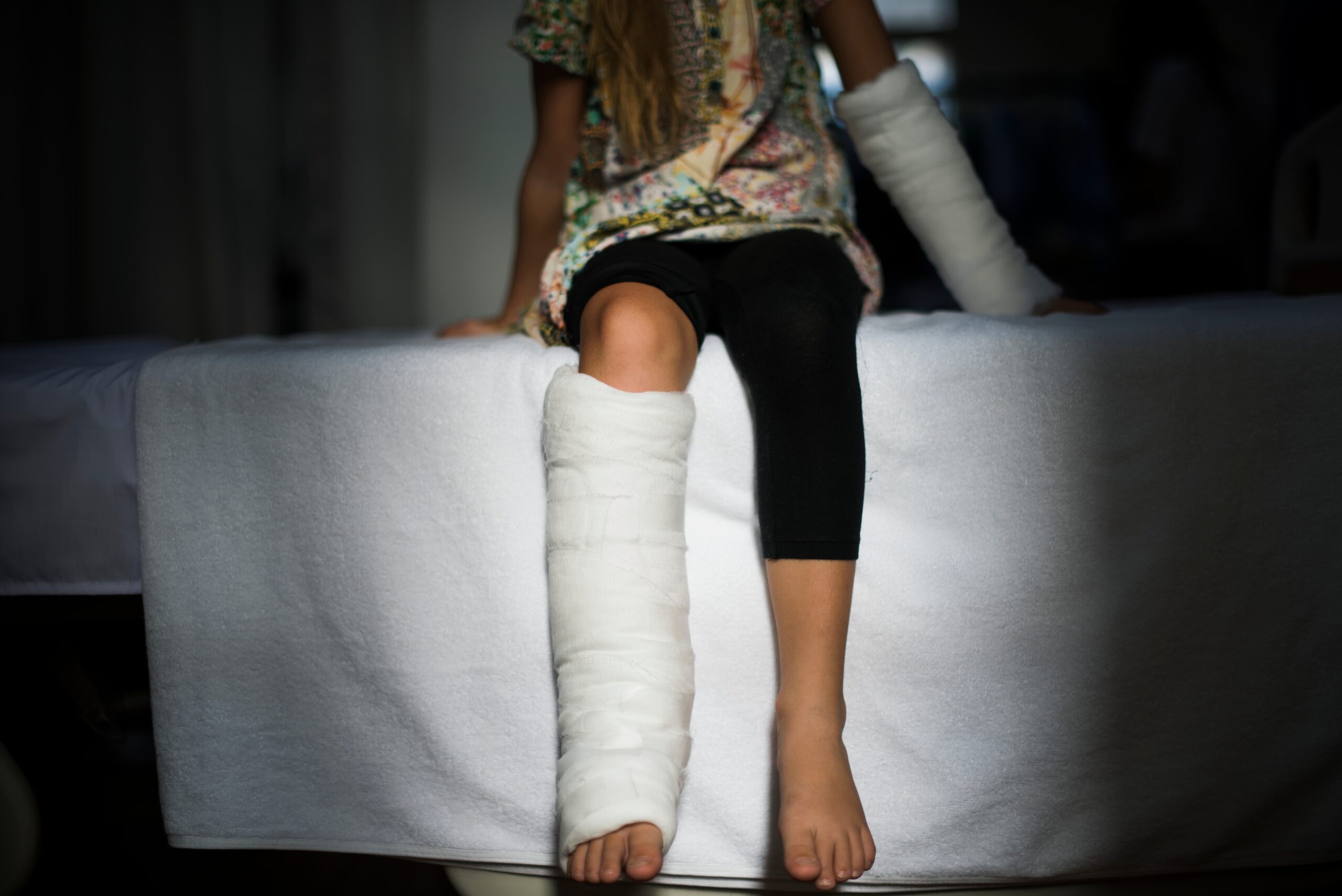Key Points:
- Unna boots offer a specialized compression therapy for managing venous ulcers and other lower leg wounds.
- This wound dressing promotes faster wound healing by providing consistent pressure and a moist environment
- Proper use, monitoring, and professional application are critical for effective leg ulcer care using Unna boot dressings.
When wounds on the lower legs refuse to heal or keep coming back, it can be frustrating, painful, and limiting. People living with venous ulcers or chronic skin conditions often face recurring infections, bandage changes, and the emotional stress that comes with slow healing. One method that has steadily made a name for itself in wound care is the Unna boot.
Designed specifically to support wound healing through compression therapy, Unna boots are not your average bandages. If you or a loved one is dealing with chronic leg ulcers, understanding how Unna boots work and when they are most effective can make a world of difference.
What Are Unna Boots?
Unna boots are a type of compression dressing commonly used for treating venous ulcers, lymphedema, and other non-healing wounds in the lower legs.
The dressing typically consists of a gauze bandage impregnated with zinc oxide, and sometimes with additional ingredients like calamine or glycerin. The gauze is wrapped firmly from the foot up to the knee, forming a semi-rigid cast. Once applied, it hardens slightly, offering mild but consistent compression therapy.
Unlike elastic bandages, Unna boots do not stretch. They rely on the movement of the calf muscles to generate compression, which is an important aspect for improving venous return and supporting circulation.
Why Unna Boots Matter in Wound Healing
Venous ulcers, which are chronic sores typically caused by poor blood flow in the legs, are notoriously slow to heal. These wounds often result from venous insufficiency, where blood pools in the lower limbs instead of returning to the heart.
Without proper pressure and support, the skin breaks down over time, leading to open sores. These wounds often become infected and can take months or even years to heal.
Unna boots step in as an effective solution by:
- Reducing swelling through sustained compression.
- Improving venous circulation, which supports oxygen and nutrient delivery to the wound.
- Maintaining a moist wound environment, thanks to the zinc oxide, which soothes the skin and promotes regeneration.
- Protecting the wound from external contaminants.
When used correctly, an Unna boot dressing not only shortens healing time but also reduces the risk of infection and recurrence.
Conditions That Benefit from Unna Boot Dressing
Unna boots are not used for every wound type. However, they are particularly effective in managing:
- Venous ulcers
- Lymphedema
- Chronic dermatitis or eczema with exudate
- Traumatic lower leg wounds with edema
- Healed ulcers requiring maintenance compression
In cases of arterial ulcers or mixed-etiology wounds (where arterial and venous insufficiency coexist), Unna boots may not be recommended, as compression could further restrict blood flow. Always consult with a wound care specialist for accurate diagnosis and treatment planning.
Application: How Unna Boots Are Used
The process of applying an Unna boot dressing requires care and precision:
- Wound Assessment and Cleaning: The wound is first cleaned and assessed for infection, depth, and drainage.
- Primary Dressing (if needed): A non-stick or absorbent dressing may be placed directly on the wound.
- Application of the Unna Boot: The zinc-impregnated gauze is wrapped starting at the base of the toes and continuing up to just below the knee in a spiral fashion.
- Outer Layer Wrap: An elastic or cohesive bandage may be added over the top for support and to keep the dressing in place.
- Wear Time: The boot is typically left on for 3–7 days, depending on wound drainage and the patient’s activity level.
Proper technique is key. A dressing that’s too tight can cause pain or restrict circulation, while a loose wrap won’t provide the needed compression.
 What Patients Can Expect While Wearing Unna Boots
What Patients Can Expect While Wearing Unna Boots
Adjusting to an Unna boot can take some getting used to. Here’s what to expect:
- Mobility Support: The boot is semi-rigid, meaning you can still walk, but it may feel stiff.
- No Bathing or Showering: Unna boots are not waterproof. Sponge baths are usually recommended unless covered with protective gear.
- Monitoring for Complications: Watch for signs of too much pressure, such as numbness, discoloration of toes, or increasing pain, and report them to your care team immediately.
- Follow-Up Visits: Unna boots must be reapplied periodically, depending on how quickly the wound is healing and how much exudate is present.
Tips for Managing Unna Boots at Home
Managing leg ulcer care at home with an Unna boot doesn’t have to be overwhelming. Some useful tips include:
- Elevate your legs when sitting to reduce swelling.
- Avoid standing still for long periods to support circulation.
- Keep the boot clean and dry at all times.
- Wear supportive footwear to aid mobility and reduce stress on the boot.
- Adhere to follow-up appointments to reassess healing and adjust treatment as needed.
The healing journey may take time, but consistent use and proper care of the Unna boot dressing can significantly accelerate recovery.
Compression Therapy: Why It’s Central to Chronic Wound Management
Compression therapy is the cornerstone of treatment for venous ulcers. It works by:
- Reducing pressure in distended veins
- Supporting the calf muscle pump function
- Limiting fluid buildup in the lower legs
Unna boots offer a targeted form of this therapy that’s less dependent on elastic pressure and more reliant on mechanical support. For patients who cannot tolerate tighter compression stockings, Unna boots may be a more comfortable and sustainable option.
When Not to Use Unna Boots
Despite their effectiveness, Unna boots are not appropriate for all wounds. Avoid using them if:
- The patient has severe arterial disease
- There’s an active infection that needs aggressive drainage
- The leg has a suspicious growth or malignancy
- There’s deep vein thrombosis (DVT) suspected
In these cases, applying compression can do more harm than good. A full vascular assessment is often required before starting any compression-based wound dressing strategy.
Speak to a Specialist Before Starting
Using Unna boots isn’t a DIY solution. Because each wound has unique needs, a wound care specialist must evaluate the wound and determine the appropriate course of treatment. Self-application or poor technique can delay healing or even worsen the wound.
Take the Next Step in Wound Recovery with Revival Home Health Care
Chronic leg wounds are more than just skin-deep. They affect mobility, independence, and peace of mind. Unna boots are a reliable and often underutilized method for supporting healing in lower leg wounds, especially those caused by venous disease. By applying the right compression and promoting a healing environment, they help turn a lingering wound into a manageable recovery process.
If you or a loved one is struggling with chronic wounds like venous ulcers, it’s time to explore specialized care. At Revival Home Health Care, we provide professional wound care services in New York, including expert management and application of Unna boot dressings.
Our skilled nurses at Revival Home Health Care deliver personalized leg ulcer care in the comfort of your home, ensuring proper application, monitoring, and follow-up. We focus on evidence-based solutions to reduce complications and support faster healing. Whether you need consistent compression therapy or advanced wound management, we’re here to help.
Contact us today to schedule a wound assessment and begin a treatment plan that works for your lifestyle and recovery goals.


 75 Vanderbilt Ave Staten Island, NY 10304
75 Vanderbilt Ave Staten Island, NY 10304 info@revivalhhc.org
info@revivalhhc.org 718.629.1000
718.629.1000